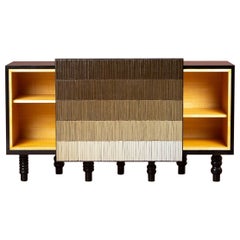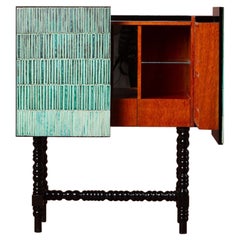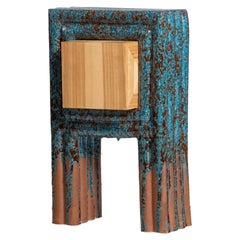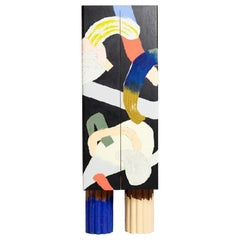Jakub Vavra
2010s Czech Modern Cabinets
Ceramic
2010s Czech Modern Cabinets
Ceramic, Beech
2010s Czech Modern Cabinets
Ceramic, Wood
2010s Czech Modern Cabinets
Ceramic, Wood
Recent Sales
2010s Czech Modern Cabinets
Ceramic, Wood
People Also Browsed
2010s Mexican Modern Coffee and Cocktail Tables
Hardwood
21st Century and Contemporary Italian Modern Vases
Ceramic, Majolica
21st Century and Contemporary Portuguese Modern Desks and Writing Tables
Onyx, Brass
21st Century and Contemporary Portuguese Modern Sofas
Fabric, Bouclé, Wood
Vintage 1980s Philippine Post-Modern Credenzas
Stone
21st Century and Contemporary Italian Modern Bookcases
Steel
21st Century and Contemporary Portuguese Modern Wall Mirrors
Mirror, Walnut
21st Century and Contemporary Italian Mid-Century Modern Wall Lights and...
Brass, Gold Leaf
21st Century and Contemporary Wall Lights and Sconces
Rock Crystal
20th Century Russian Folk Art Garniture
Silver, Enamel
Antique Late 19th Century European Moorish Architectural Elements
Wrought Iron
Mid-20th Century Swedish Scandinavian Modern Night Stands
Pine
21st Century and Contemporary Portuguese Mid-Century Modern Swivel Chairs
Brass
2010s British Mid-Century Modern Floor Lamps
Earthenware, Linen, Oak
Vintage 1940s Lounge Chairs
Sheepskin, Wood
2010s Turkish Modern Stools
Wood, Lacquer
Milan Pekar for sale on 1stDibs
Known for his innovative use of crystalline glazes on his ceramics and decorative vases, ceramicist Milan Pekar works in an enigmatic, experimental style that results in artistic, modern and practical furniture and objects.
Born in 1980 in Prague, Pekar studied ceramics and porcelain at the city’s Academy of Arts, Architecture and Design (AAAD) and earned his MFA in 2006. He also studied at the University of Art and Design in Helsinki, Finland in 2005. Since 2011, Pekar has worked as an assistant professor in the studio of ceramics and porcelain at AAAD.
In 2009, Pekar established his studio — Milan Pekar Studio — in Prague. For the past several years, his work has focused primarily on the development of specialized crystalline glazes in which crystals grow in constellations and clusters on ceramic surfaces. Although the process is not new, Pekar’s forward-looking design sensibility and use of unique color combinations in his porcelain urns, candle holders and other decorative objects truly distinguishes his work in the very crowded field of ceramics.
In addition to his vases, Pekar creates ceramic furniture “shaped from soft extruded profiles.” Described as a cross between sculpture and furniture, Pekar’s collection includes his quirky ceramic floor lamps and table lamps and tube-like stools which can double as side tables. Pekar has also collaborated with several designers to create his cabinets and dry bars. These pieces include the exotic wood and ceramic mosaic Gradient cabinet, which he designed with cabinet maker Jakub Vávra, and the multicolored Cabinet of Curiosities, which was created with Vávra and painter Lucie Jindrák Skrivánkova.
Pekar’s works have been exhibited internationally at galleries and museums throughout Europe and Asia. His pieces are also included in public collections at the Museum of Decorative Arts, the Grassi Museum and the Museum of Decorative Arts.
On 1stDibs, find a range of Milan Pekar decorative objects, seating and tables.
A Close Look at Modern Furniture
The late 19th and early 20th centuries saw sweeping social change and major scientific advances — both of which contributed to a new aesthetic: modernism. Rejecting the rigidity of Victorian artistic conventions, modernists sought a new means of expression. References to the natural world and ornate classical embellishments gave way to the sleek simplicity of the Machine Age. Architect Philip Johnson characterized the hallmarks of modernism as “machine-like simplicity, smoothness or surface [and] avoidance of ornament.”
Early practitioners of modernist design include the De Stijl (“The Style”) group, founded in the Netherlands in 1917, and the Bauhaus School, founded two years later in Germany.
Followers of both groups produced sleek, spare designs — many of which became icons of daily life in the 20th century. The modernists rejected both natural and historical references and relied primarily on industrial materials such as metal, glass, plywood, and, later, plastics. While Bauhaus principals Marcel Breuer and Ludwig Mies van der Rohe created furniture from mass-produced, chrome-plated steel, American visionaries like Charles and Ray Eames worked in materials as novel as molded plywood and fiberglass. Today, Breuer’s Wassily chair, Mies van der Rohe’s Barcelona chair — crafted with his romantic partner, designer Lilly Reich — and the Eames lounge chair are emblems of progressive design and vintage originals are prized cornerstones of collections.
It’s difficult to overstate the influence that modernism continues to wield over designers and architects — and equally difficult to overstate how revolutionary it was when it first appeared a century ago. But because modernist furniture designs are so simple, they can blend in seamlessly with just about any type of décor. Don’t overlook them.
Finding the Right Cabinets for You
Although traditionally used in the bedroom to store garments that would not be hung in a closet, an antique or vintage cabinet can easily find a purpose in rooms throughout your entire house.
The world's first storage cabinets, reportedly constructed in Renaissance-era Europe, were demonstrative of excellence in carpentry and the work of master carvers. These robust bureaus or sophisticated chests of drawers were typically built from common woods, such as oak or walnut. Although they were fairly uniform in structure and lacked the bright colors of modern-day furniture, case pieces and storage cabinets that date from the 18th century and earlier were often found in the homes of nobility.
Their intricate carvings and various embellishments — adornments made from ivory, ornate lacquer work and, later, glass shelvings — reflect the elegance with which these decorative furnishings were associated. Given its valuable purpose and the beauty of the early furnishings' designs, the storage cabinet is an investment that will never go out of style.
The practical design that defines the earliest storage cabinets has inspired the creation of household must-haves, like minimalist drink trolleys and marble wood bookcases. From hiding outdoor gear in the mudroom to decluttering your kitchen with a tall kitchen pantry cabinet, these versatile furnishings have now become available in enough sizes, styles and colors to accommodate any space. After all, these aren't your run-of-the-mill filing cabinets.
A sophisticated storage cabinet — wood storage cabinets with doors and shelves, for example — can serve as a room divider when necessary, while the right vintage wall unit or floor-to-ceiling cabinetry solutions can seamlessly become part of any space without disrupting the energy of the room. And although you may hide items away in its drawers, bookworms might prefer a storage cabinet with open shelving for displaying favorite books or other media.
One-of-a-kind solutions for the modern consumer abound, but enthusiasts of understated, classical beauty may turn to Baroque-style storage cabinets. Elsewhere, admirers of mid-century modernism looking to make a statement with their case pieces will warm to the dark woods and clean lines of vintage storage cabinets by Paul McCobb, Florence Knoll or Edward Wormley.
Sometimes the best renovation is a reorganization. If you're ready to organize and elevate your space, a luxury storage cabinet is the addition you need.
Find a variety of vintage and antique storage cabinets on 1stDibs, including unique Art Deco storage cabinets, chinoiserie cabinets and more.






